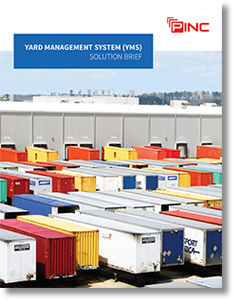The “Bullwhip Effect”
A distribution channel phenomenon in which inaccurate forecasts quickly turn into supply chain inefficiencies, the “bullwhip effect” refers to increasing swings in inventory in response to shifts in customer demand as one moves further up the supply chain.
With COVID-19 taking its toll on supply chains around the world, more companies will experience this detrimental impact, which was originally identified back in the 1960s and then weaved into supply chain vernacular in the 1990s.
That’s when Hau Lee of Stanford University told a story about Volvo to illustrate the bullwhip effect’s impact on the supply chain.
Suffering a glut in “green” cars at the time, Volvo’s sales and marketing developed a program to move its excess inventory.
The program helped raise interest in the cars, but Volvo’s manufacturing department was unaware of the campaign and wound up reading the increase in sales as an indication of a growing demand for green cars. In response, it ramped up production, thus adding to the glut and creating a bigger issue for the car manufacturer.
“A supply chain is a complex group of companies that move goods from raw materials suppliers to finished goods retailers,” Osmond Vitez writes in The Bullwhip Effect in Supply Chain.
“These companies work together when meeting consumer demand for a product; supply chains allow companies to focus on their specific processes to maintain maximum probability. Unfortunately, supply chains may stumble when market conditions change and consumer demand shifts.”
What Causes the Bullwhip to Snap?
According to Vitez, the bullwhip effect surfaces when changes in customer demand push organizations to order more goods to meet the new demand.
From there, the bullwhip effect flows up the supply chain - from the retailer to the distributor to the manufacturer and right through to the raw materials supplier. In many cases, the problem can be traced back to forecasting errors.
For example, when companies introduce new products, they estimate the demand for goods based on current market conditions.
“Most companies in the supply chain order more than they can sell, attempting to prevent shortages and lost sales of goods,” Vitez writes, noting that this excess inventory begins to increase or decrease during the normal market fluctuations of supply and demand.
“In the bullwhip effect, demand for items amplifies up a supply chain like the crack of a whip. Imagine a bullwhip - a tiny, swift flick at the whip’s handle results in an uncontrolled, widely snapping motion at its tip,” Amy White describes in The Causes and Impact of the Bullwhip Effect on Supply Chains.
“Similarly, a simple action such as a manager ordering products at a store can result in unpredictable effects at the top of the supply chain like a manufacturer or wholesaler.”
This variable and unpredictable demand leads to significant supply chain inefficiencies that include (but aren’t limited to), buying and storing excessive inventory, lost revenues, ineffective transportation, missed production schedules, out-of-stock products, poor customer service, and higher costs for consumers.
Addressing the COVID-19 Bullwhip
In the wake of the COVID-19 health crisis, images of empty store shelves have triggered a few things: even more panic buying, a social media frenzy of hoarder shaming, and even gang activity linked to toilet paper theft in Hong Kong.
“For many supply chain leaders, this presents the enormous and potentially costly challenge of dealing with the bullwhip effect,” Jenny Reese points out in Preparing for COVID-19 and the bullwhip effect: What happens to the supply chain when you buy 100 rolls of toilet paper?
“When major swings in inventory occur from panic buying and hoarding, the impact of this sudden demand is magnified as it moves upstream in the supply chain (similar to the way a bullwhip’s thong amplifies in a wave as it moves away from the handle),” Reese writes, noting that little or no visibility into demand patterns and limited understanding of demand drivers are the primary culprits in this scenario (of course, COVID-19 came with little early warning, hence the paper goods shortage).
“How long can this boom in freight volumes last?” FreightWaves’ Daniel Pickett asks. “I have to imagine we are seeing a one-time pull of inventory as pantries, garages, and freezers are filled. Inevitably, the shelves at home will be full, and we will see a ‘demand hangover’ in grocery retail and trucking.”
Building Bridges with Partners
For companies that want to avoid or counter the bullwhip effect within their own supply chains, the answer lies in accurate, real-time demand information across the supply chain.
To achieve that, companies must shift from a forecast-driven ordering system to measures that enable information-sharing with the supply chain partners and provide complete visibility of the actual customer demand.
Using real-time inventory and shipment information, companies can effectively minimize the risk of disruption while moving more inventory at a predictable, reliable cadence.
In How to reduce the bullwhip effect, George Lawton tells companies to educate themselves on the causes of the bullwhip effect, build better trust across supply chain partnerships, consolidate supply chain data (i.e., aggregate efforts across suppliers), and gain an understanding about partner processes. “Building bridges with other supply chain partners is critical to preventing the bullwhip effect.”
Related Article: Using Inventory Accuracy and Yard Automation to Fight the COVID-19 Chaos
Related Resources
PINC Yard Management Systems: 4 Case Studies
In these 4 Yard Management System case studies, we detail how Pactiv, Batory Foods, Cost Plus World Market, and East Coast Warehouse & Distribution Corp. implemented PINC's Yard Management solutions to increase productivity, reduce expenses, eliminated trailer detention fees, and maintain control and visibility over yard operations, and more. Download Now!
The Four Forces Driving Supply Chain Innovation
When supply chain professionals discuss supply chain execution, their focus is typically put on transportation management systems and warehouse management systems, the yard management systems capability and importance is mistakenly undervalued. Download Now!
The Rise of the Digital Yard
In this white paper, we explore the rise of the digital yard and show how technology is enabling significant efficiencies, productivity gains, and cost containment in a world where every penny added to the bottom line positively impacts organizational success. Download Now!
Solution Brief: Yard Management System
Yards are the intersection between warehouses and transportation, they are a critical linkage in logistics management practices and have a significant impact on the overall efficiency of the supply chain. Download Now!
More PINC Resources
Article topics
Email Sign Up























